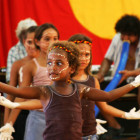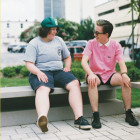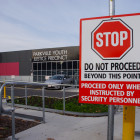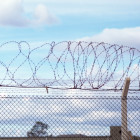
Young, Indigenous and Imprisoned, Australia’s National Disgrace
|
A new report shows that within the Australian juvenile justice system young indigenous people are vastly overrepresented.
Juvenile Justice Information Exchange (https://jjie.org/page/308/)

In late September, Torri was driving down the highway with her 11-year-old son Junior in the back seat when her phone started ringing.
It was the Hamilton County Sheriff’s deputy who worked at Junior’s middle school in Chattanooga, Tennessee. Deputy Arthur Richardson asked Torri where she was. She told him she was on the way to a family birthday dinner at LongHorn Steakhouse.
“He said, ‘Is Junior with you?’” Torri recalled.
Earlier that day, Junior had been accused by other students of making a threat against the school. When Torri had come to pick him up, she’d spoken with Richardson and with administrators, who’d told her he was allowed to return to class the next day. The principal had said she would carry out an investigation then. ProPublica and WPLN are using a nickname for Junior and not including Torri’s last name at the family’s request, to prevent him from being identifiable.
When Richardson called her in the car, Torri immediately felt uneasy. He didn’t say much before hanging up, and she thought about turning around to go home. But she kept driving. When they walked into the restaurant, Torri watched as Junior happily greeted his family.
Soon her phone rang again. It was the deputy. He said he was outside in the strip mall’s parking lot and needed to talk to Junior. Torri called Junior’s stepdad, Kevin Boyer, for extra support, putting him on speaker as she went outside to talk to Richardson. She left Junior with the family, wanting to protect her son for as long as she could ...

A new report shows that within the Australian juvenile justice system young indigenous people are vastly overrepresented.

When I was born, the doctor dictated the way I would live the rest of my life simply by proclaiming “It’s a girl” to my excited and tired parents. Those four words would determine which pronouns people addressed me by, and the social standards I would be expected to live up to – until 16 years later when I would come out to friends and some of my family as trans non-binary.

NORTHAM, Australia -- Sometimes on a Friday night, when there’s nothing better to do and the streets are quiet, indigenous kids in this town 100km (some 60 miles) north-east of Perth, Western Australia, might hang out at the local police station.

Research consistently “fails to support the argument that curfews reduce crime or criminal victimization."

We are now approaching the last quarter of 2013 and the subject of status offenders and what we should do with them or for them is still an active subject of discussion within the framework of our juvenile justice systems, and rightfully so. This is so despite the fact that our courts, law enforcement entities, child advocates, communities and law makers have been talking about this issue for more than 40 years. My bookshelves are lined with reports, studies, journals, task forces and more on the subject. Will we ever get it right? Status offenses, as we know, commonly refer to conduct that would not be unlawful if committed by an adult but is unlawful only because of a child or youth’s legal status as a minor.

In the search for answers, education and employment are showing signs of helping to break the pattern.

People of all ages are looking for a better way to live, a better way to address struggle, and a better way to be in the world.

Who, exactly, are the young people behind the bars? Two teen writers from Represent, a national magazine by and for youth in foster care, vividly and candidly describe the circumstances behind their incarceration in two stories.